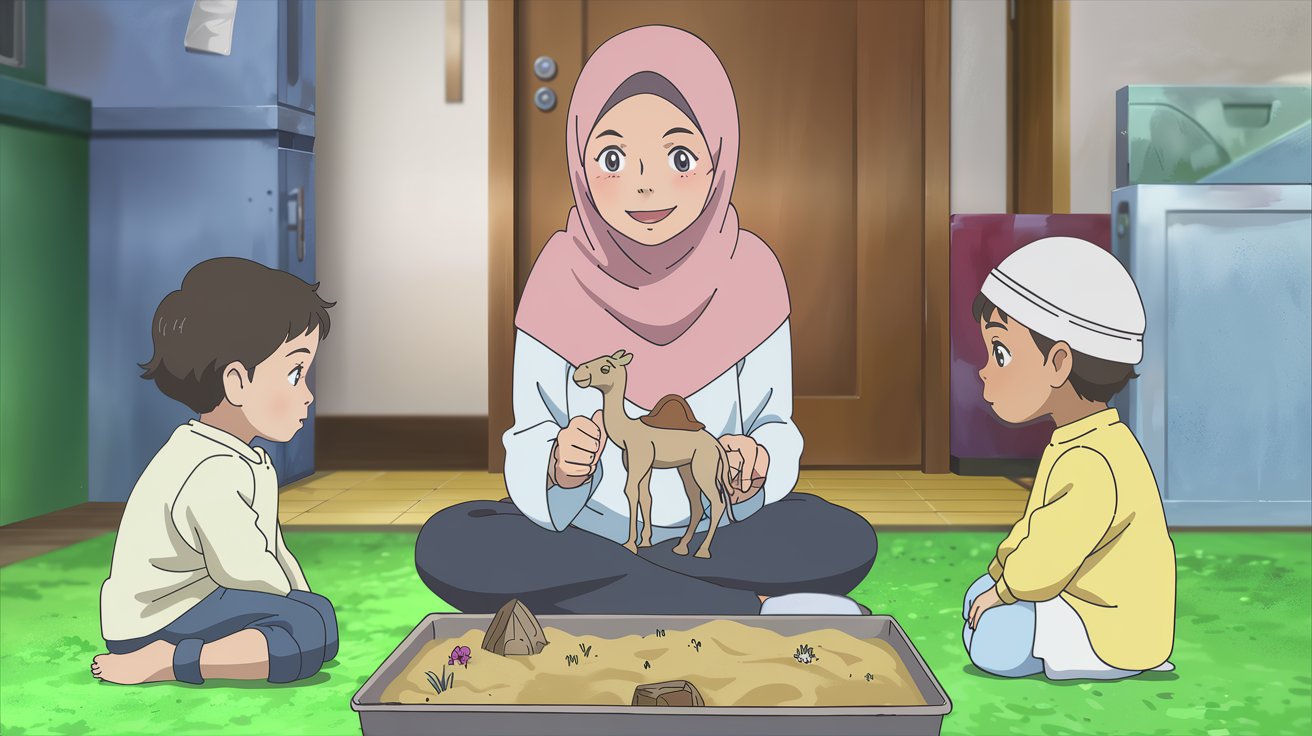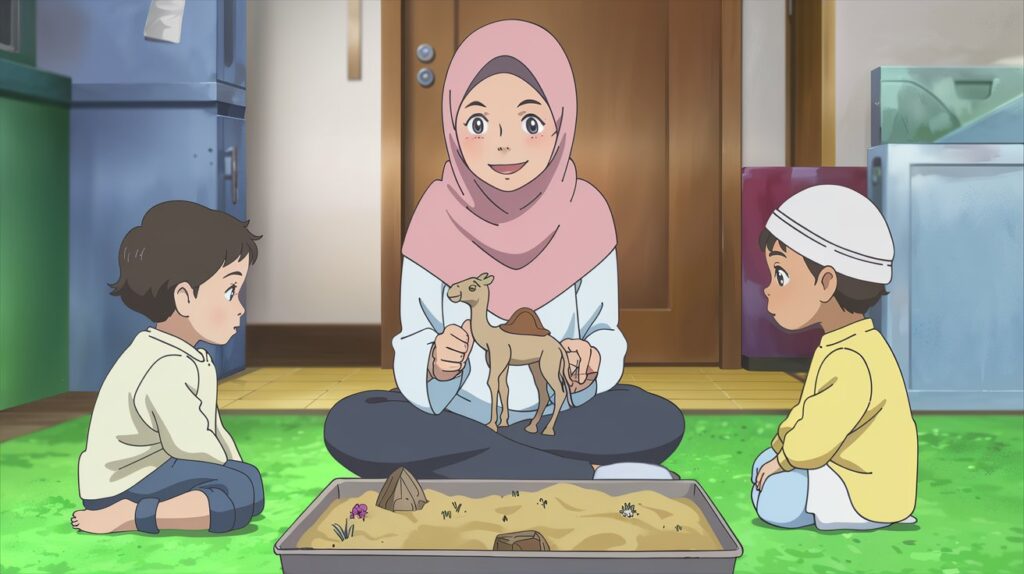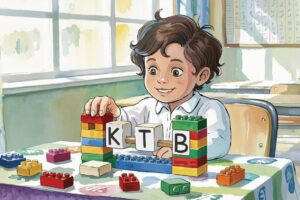
Islamic storytelling for kids: Teach Seerah and Quranic Stories
Introduction: Why Storytelling is the Heartbeat of Islamic Education 🌱
For Muslim parents and educators, one of the biggest challenges today is keeping children emotionally connected to the Quran and the Seerah. Textbooks and worksheets often fall flat—but Islamic storytelling for kids? That’s where the magic happens.
Just think: when kids hear about the bravery of Musa عليه السلام, the compassion of the Prophet Muhammad ﷺ, or the bird’s dua in Surah Al-Fil—it’s the story that sticks, not just the facts.
At Roots Muslim School, we use storytelling every day—in our YouTube Tafseer series, TikTok Seerah skits, and live storytime classes—to help kids connect deeply with their Deen.

1. Use Your Voice Like a Pro: Slow Down, Pause, Whisper, Surprise 🎤
Your voice is your most powerful tool. When telling a Quranic story or Seerah event:
✅ Pause dramatically before the exciting part
✅ Whisper during suspenseful moments
✅ Raise your tone during big events
Example:
When telling the story of the Prophet ﷺ in the cave during Hijrah, drop your voice to a whisper when talking about the spider and the web. Let kids lean in, waiting to hear more.
2. Bring Stories to Life with Props 🧺
A simple scarf can become a desert landscape. A toy bird can represent the birds of Ababil.
Why it works:
Props turn passive listening into interactive learning. Kids stay visually and physically engaged.
Try this at home or in class:
- Use a flashlight for the night of Isra and Mi’raj
- Use cotton balls as clouds when telling stories of rain and mercy
At Roots, our teachers often use props in our online storytelling sessions to help children visualize Quranic scenes.
3. Short, Scripted Storytelling Works Best for Young Kids 📝
Children under 10 have short attention spans. Keep your stories:
✅ Under 5 minutes
✅ Focused on one powerful lesson
✅ Full of dialogue and action words
Example:
Instead of telling the entire story of Prophet Yunus عليه السلام, just focus on the moment he was in the belly of the whale making du’a. Then pause and ask:
👉 “What would YOU say if you were in the dark like Yunus عليه السلام?”
Roots’ TikTok Seerah Shorts use exactly this method—fast, engaging, and reflective.

4. Don’t Forget Emotions: Make Them Laugh, Gasp, Reflect 😊😲🤲
Use expressions. Act surprised when the Prophet ﷺ is saved. Smile big when talking about Allah’s mercy. Wipe an imaginary tear when speaking of hardships.
Kids remember how you made them feel, not just what you said.
At Roots, our video scripts are written with emotional cues—so kids feel part of the story.
5. Invite Kids to Retell the Story (In Their Own Words!) 🗣️
After you tell the story, say:
👉 “Who wants to tell it again?”
👉 “Can you act it out for me?”
This simple step builds confidence, language skills, and Islamic identity—all in one.
Bonus: Check Out Roots’ Story-Based Classes and Videos! 🎥📚
Looking for ready-to-use Islamic storytelling content for kids?
👉 Visit our YouTube channel for Quran story explainers.
👉 Join our live Seerah and Tafseer classes designed just for non-native Arabic speaking kids.
We make sure every story is age-appropriate, emotionally engaging, and rooted in authentic Islamic sources.
Final Call to Action:
🌱 Want more engaging Seerah lessons?
Subscribe to Roots Muslim School on YouTube or register for our next live story class to give your child the gift of meaningful Islamic learning!



